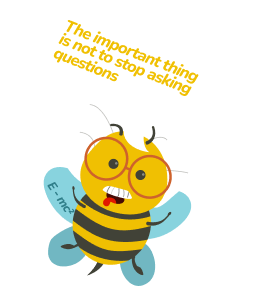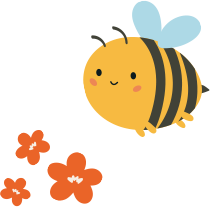Key takeaways
🔦 The object-oriented UX design methodology is an approach to design by which designers focus on structuring systems around objects and not actions or tasks.
🔍 Object-oriented UX is a design approach that stems from the principles of object-oriented programming.
💡 Contrary to the traditional design approach, where the system is action-based, OOUX focuses on understanding the objects that users interact with while using the particular product.
🍯 One of the critical advantages of the OOUX approach is it massively improves the collaboration between designers and developers.
Object-oriented UX (OOUX) is a cutting-edge approach to design by which content and features are organized into ‘objects’ to enhance design workflows.
This innovative approach to organizing user experience was introduced by Sophia Prater in 2015 and it is based on object-oriented programming principles by which software is structured around objects and not actions.
Object-oriented UX has gained significant attention over the years and is used to streamline design processes.
Ric Wiliams highlights that:
Object-oriented User Experience (OOUX) is a design philosophy and method which respects the fact that people think in objects.
It makes sense of mess by synthesizing user needs and business goals into a scalable and user-centered structure/system of interacting objects.
What is object-oriented UX (OOUX)?

Object-oriented UX is a design approach that stems from the principles of object-oriented programming.
The main idea behind this design methodology is that digital products, like websites and apps, should be designed around real-world objects and not actions or tasks.
These objects should be perceived as the key entities of the system and hence the system should be structured around them.
Contrary to the traditional design approach, where the system is action-based, OOUX focuses on understanding the objects that users interact with while using the particular product.
With the traditional design approach, an app might be built around user actions like adding products to the cart and purchasing them.
In contrast, an object-oriented approach centers the design around objects, such as the cart.
By identifying those objects and structuring an object-first design, designers have a unique opportunity to create more intuitive and scalable digital products that are in harmony with the user’s mental models.
Object-oriented UX examples
Here are some object-oriented UX examples:
E-Commerce app

Let’s take the example of an e-commerce app that sells clothes. In a traditional action-oriented design process, the designer prioritizes actions like checkout or payment completion.
In contrast, an object-oriented UX process begins by identifying core objects, such as the cart and the user. These objects would form the foundation of the design.
The cart would include properties such as added items and their costs, while the user profile would store information like personal details, history, or shipping preferences.
By structuring the system around those core objects, the designer can ensure that the design is aligned with the users’ mental models.
Project management tool

Another great example of object-oriented UX design is that of a project management tool.
In an action-based design process, the interface of an online project management tool may revolve around the actions that the user can take, such as creating a task or assigning the task to a stakeholder.
With the OOUX approach, the designer would laser focus on identifying the core objects in the system, which in this case might be the task, the user, and the project. Each of those objects would have certain properties.
For instance, the task would have a due date and a priority level.
Hence, by organizing the system around these objects, the user experience becomes more intuitive and user-friendly as it aligns with how people generally conceptualize their work.
Objects vs. Actions: The key difference

But what are the key differences between objects and actions? During the traditional action-oriented design process the designer is mostly focused on the tasks that the users need to perform.
On the contrary, when it comes to the object-based UX design approach the focus shifts to objects, which are essentially the entities that the users interact with within the system.
Hence, by structuring the user experience around objects and not actions the design becomes aligned with the users’ natural mental models making systems more intuitive.
Benefits of object-oriented UX design approach
Object-oriented UX has a host of advantages over other traditional design methods. Here is a list of the key benefits that your organization will enjoy when adopting an OOUX approach:
1. Enhanced usability and clarity
The object-oriented UX design approach helps designers create interfaces that are easier for users to perceive and understand.
By placing the focus on objects, and not actions, users can intuitively grasp the way the system works, which creates a sense of clarity when it comes to the overall user experience.
2. Consistency across the system
Another key benefit of the object-oriented UX design approach is that defining objects at the start of the design process helps create consistency across the system.
As a result, users experience a more cohesive and predictable interaction.
3. Scalability and flexibility
An object-oriented approach to design also makes digital products scalable. While new features are being added to the interface, key objects remain at the product’s core, simplifying any changes as the system evolves.
💡 Pro Tip
When designing for scalability, think beyond the current feature set—structure objects in a way that allows for seamless expansion.
Keep object properties modular and adaptable so new features can integrate smoothly without disrupting the existing system.
4. Improved collaboration between design and development
As mentioned, the OOUX approach has its routes in object-oriented programming, meaning that both design and development are operating with a focus on objects and their relationships.
In this way, the collaboration and communication between the two teams is streamlined.
5. Increased efficiency in prototyping and testing
This approach to UX design is also notorious for leading to faster iteration cycles and feedback looks, as designers can prototype and test the core objects quickly.
This creates increased efficiency in the prototyping and testing process.
6. User-centered design
The ultimate goal of UX design is creating digital products where the user is at the heart of any design decisions. OOUX places a strong emphasis on the user ensuring that the core objects align with their natural mental models.
Quote from OOUX Review:
OOUX brings clarity and consistency to design, ensuring that every part of the system aligns with real-world objects.
This approach has not only improved our product’s usability but also facilitated better collaboration between our teams.
OOUX and object-oriented programming

As mentioned above, one of the critical advantages of the OOUX approach is it massively improves the collaboration between designers and developers.
This object-based design approach at its core is similar to object-oriented programming where software is structured around objects and not actions.
Object-oriented programming structures software around objects, with certain properties and functions, that interact with each other.
Similarly, this design approach defines and structures the interface around design objects that have properties and clear relationships.
It is this similarity in the implementation approach that makes designers and developers collaborate and communicate more efficiently. Hence, developers can quickly grasp the designer’s approach to design and translate the designs into code!
When to use OOUX
OOUX can be applied at different stages of the design process and it has applications in various scenarios when it comes to designing systems:
Developing new digital products
The object-based approach is a great way to kick-start the development of a new digital product or service. Using this design approach from the very beginning will help you clearly define and use objects to structure your interface and system.
This design approach will also guide the development of the product leading to a streamlined development process.
Redesigning existing systems
If you are planning to redesign an existing digital product, then adopting the object-based approach mindset might help you not only streamline the redesigning process but also ensure that your final design is more intuitive and user-friendly.
Designing for complex solutions
When it comes to designing large and complex systems, the object-based approach might be the best route to go down!
This approach can provide you with a clear list of objects and their core interactions making it easier to conceptualize and hence design the interface.
How to apply OOUX

Here is an actionable guide on how to apply OOUX:
1. ORCA Method
The ORCA method can help you identify all the objects within a system. It stands for object mapping, relationship diagramming, content inventory, and action inventory.
As Sophia Prateria explains:
ORCA is a 15-step meat-grinder of a process: put good research in one end and out the other, get clarity, structure, and everything you need to go into interaction design with confidence.
It’s an iterative process that helps you synthesize research into naturally-intuitive UX.
2. User research and discovery phase
Before starting with your design, conduct your user research with a focus on identifying the core objects in your system. Drill down your research to better understand the properties and relationship between those.
3. Object mapping
Based on your user research it is now time to define your key objects and their key properties. This part of the process is the most crucial as it will be the foundation of any other design decisions that you will take later down the line.
💡 Pro Tip
When defining key objects, focus on how users naturally think about and interact with them.
If an object doesn’t align with user expectations, consider refining its properties or breaking it down into more intuitive components.
4. Creating a relationship diagram
Once you have mapped out your core objects it is time to think about the relationships between them. This is the stage where creating a relationship diagram can help you visualize all these connections and dependencies between the different objects.
5. Prototyping and CTA inventory
Now it is time to prototype your design by creating interactive prototypes of those core objects. A pro tip here is to use an action inventory to make sure that the actions that your users will take surrounding the objects are logical and natural.
6. Iterative prototype testing
Finally, do not forget to test your prototype with real users to gather insights and valuable feedback about your design. When testing pay close attention to the way the participants interact with your core objects and adjust as needed!
🌟 UX Research Course Recommendation
Boost your UX Research skills with Kevin Liang’s User Experience Research Self-Paced Masterclass! The course will give you in-depth lessons on:
🔍 Winning UX business strategies
💡 How to use AI to supplement your process
🧠 Human factor psychology
OOUX in design thinking

OOUX is a vital part of the design thinking methodology as it focuses on the clarity of the user experience. Design thinking is all about stepping into your user’s shoes. OOUX further enhances this notion as it ensures that the design is aligned with the user’s natural mental models.
Challenges in OOUX design
While OOUX presents a host of benefits for designers and developers alike it is worth noting that it also comes with its challenges. To begin with, identifying core objects might prove to be challenging especially when it comes to large, complex systems.
On top of that, there is the peril of overengineering objects which can lead to unnecessary complexity and confusion. Lastly, maintaining consistency while scaling the product might prove tricky and it requires meticulous planning.
In a nutshell
Object-oriented UX is an innovative design approach by which systems are organized around objects and not actions. This approach helps designers create more intuitive and scalable systems.
Whether you are working on a new digital product or planning a redesign, OOUX can provide you with a valuable framework for designing digital products without a hitch!
If you want to level up your UX, we recommend UXtweak. With features, such as live interviews, usability testing and session recording, creating an intuitive interface has never been easier. Talk to our team today! 🐝






